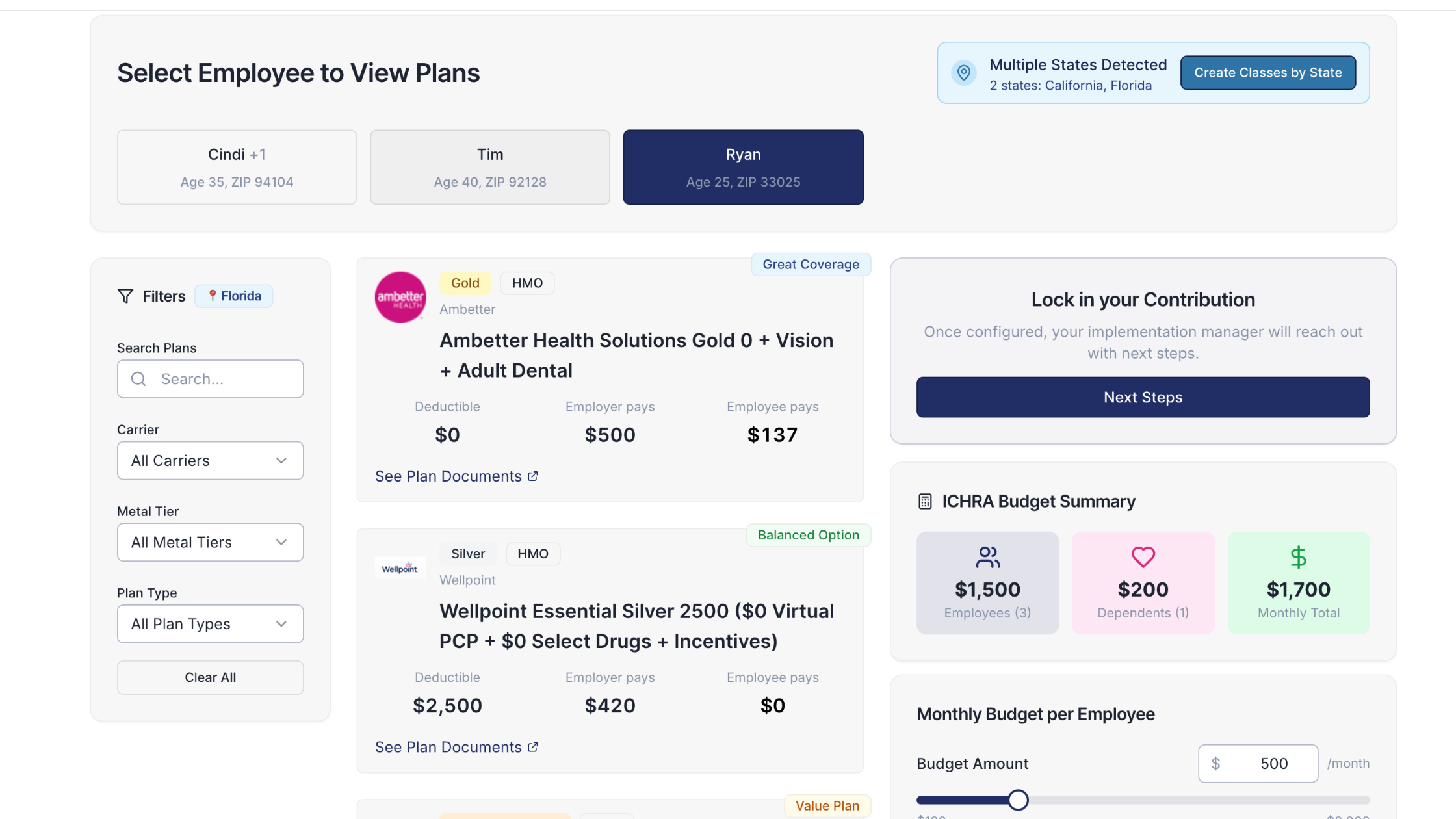The Basics of Employee Benefits Administration: A Comprehensive Guide

Understanding the Basics of Employee Benefits Administration
Employee benefits play a crucial role in the workplace. They are not just about providing perks to your employees; they are an investment in their well-being and job satisfaction. Offering a comprehensive benefits package shows your employees that you care about their needs beyond their paycheck, and that can go a long way in creating a positive work environment.
When it comes to employee benefits administration, there are a few key components you need to be familiar with. These include health insurance, retirement plans, paid time off, and additional perks such as flexible work arrangements or wellness programs. Understanding these components will help you build a benefits program that meets the diverse needs of your workforce.
Health insurance is one of the most important components of employee benefits administration. It provides employees with access to medical care and helps them manage the costs associated with healthcare. There are different types of health insurance plans, including HMOs, PPOs, and high-deductible health plans. Each type has its own set of benefits and limitations, so it's important to choose a plan that suits the needs of your employees.
Retirement plans are another crucial aspect of employee benefits administration. These plans help employees save for their future and ensure financial security after they retire. Common retirement plans include 401(k) plans, pension plans, and individual retirement accounts (IRAs). Employers may also offer matching contributions to encourage employees to save for retirement.
Paid time off is an essential benefit that allows employees to take time off from work for various reasons, such as vacation, personal days, or illness. Offering paid time off not only helps employees maintain a healthy work-life balance but also promotes employee well-being and reduces burnout. The amount of paid time off provided may vary based on factors such as length of service and job level.
In addition to the core benefits mentioned above, many employers offer additional perks to enhance employee satisfaction and engagement. Flexible work arrangements, such as remote work or flexible hours, allow employees to have more control over their work schedule and improve work-life balance. Wellness programs, such as gym memberships or health screenings, promote employee health and well-being.
Employee benefits administration involves not only selecting and implementing these benefits but also effectively communicating them to employees. Clear and concise communication is essential to ensure that employees understand the benefits available to them and how to take advantage of them. Regular communication, such as employee newsletters or benefits fairs, can help keep employees informed and engaged.
In conclusion, employee benefits administration is a critical aspect of creating a positive work environment and meeting the diverse needs of your workforce. By understanding the components of employee benefits, such as health insurance, retirement plans, paid time off, and additional perks, you can design a comprehensive benefits program that attracts and retains top talent.
Navigating the Employee Benefits Administration Process
Managing an employee benefits program can be a complex task, but with the right approach, you can streamline the process and ensure its effectiveness. Let's break it down step-by-step:
Step 1: Define Your Benefits Strategy
Start by defining your benefits strategy. What goals do you want to achieve with your benefits program? Are you aiming to attract top talent, improve employee retention, or enhance employee satisfaction? Knowing your objectives will guide you in designing a benefits package that aligns with your company's values and the needs of your employees.
For example, if your goal is to attract top talent, you may want to focus on offering competitive health insurance plans, retirement benefits, and professional development opportunities. On the other hand, if your objective is to improve employee retention, you may consider implementing flexible work arrangements, wellness programs, and additional paid time off.
Step 2: Research and Select Benefit Options
Next, research different benefit options and select the ones that best suit your employees' needs and your budget. Consider factors such as the demographics of your workforce, industry benchmarks, and employee feedback. Remember, it's crucial to strike a balance between providing valuable benefits and managing costs.
For instance, if your workforce consists mainly of young professionals, you may want to offer benefits like student loan assistance, gym memberships, and mentorship programs. On the other hand, if you have a diverse workforce with varying needs, you may need to offer a range of benefits to accommodate different preferences and life stages.
Step 3: Communicate Benefits Information
Once you've selected your benefit options, communicate the details to your employees. Make sure they understand what benefits are available to them, how to access them, and any important deadlines or restrictions. Effective communication is key to ensuring that your employees fully utilize their benefits and appreciate their value.
You can use various communication channels such as email, intranet portals, and employee meetings to provide clear and concise information about the benefits program. Consider creating engaging and informative materials, such as brochures or videos, to help employees understand the value of each benefit and how it aligns with their needs.
Step 4: Manage Enrollments and Changes
Keep track of employee enrollments and changes throughout the year. Whether it's adding a new hire to the benefits program or handling life events that trigger changes, such as marriage or the birth of a child, staying on top of these updates is crucial for maintaining accurate records and providing seamless benefits administration.
Implementing an online benefits enrollment system can simplify the process and allow employees to make changes easily. Additionally, ensure that your HR team is well-trained in benefits administration procedures to provide accurate information and support to employees during enrollment periods or when changes occur.
Step 5: Evaluate and Adjust
Regularly evaluate the success of your employee benefits program. Monitor metrics like employee satisfaction, retention rates, and participation in different benefits. Use this data to identify areas for improvement and make adjustments as needed. Remember, benefits administration is an ongoing process, and it's essential to continuously assess and refine your program to meet the evolving needs of your workforce.
Consider conducting employee surveys or focus groups to gather feedback on the benefits program. This feedback can provide valuable insights into what employees appreciate about the program and areas where improvements can be made. Additionally, stay updated on industry trends and benchmark your benefits program against other companies to ensure competitiveness.
Best Practices for Effective Employee Benefits Administration
In addition to following the steps above, there are some best practices you can implement to ensure effective employee benefits administration:
- Automate administrative tasks using employee benefits administration software. This will save you time and reduce the risk of errors.
- Train your HR team on benefits administration procedures to ensure they can provide accurate information and support to employees.
- Regularly communicate updates and changes to your benefits program to keep employees informed and engaged.
- Seek feedback from employees on their experience with the benefits program and use it to enhance the program's effectiveness.
Evaluating the Success of Your Employee Benefits Program
Measuring the success of your employee benefits program is essential to ensure it's meeting its intended goals and driving positive outcomes for your employees and your business. Consider the following metrics when evaluating your program:
- Employee Satisfaction: Conduct surveys or interviews to gauge employee satisfaction with the benefits offered and their overall experience with the program.
- Retention Rates: Analyze whether your benefits program is contributing to higher employee retention rates compared to industry benchmarks.
- Utilization Rates: Track the percentage of employees who are actively utilizing different benefits and identify areas where usage may be low.
- Cost Management: Assess whether your benefits program is achieving a balance between providing valuable benefits and managing costs effectively.
By regularly evaluating these metrics and making data-driven adjustments, you can ensure that your employee benefits program remains competitive, relevant, and impactful.
Streamlining Employee Benefits with Administration Software
The task of managing employee benefits can be made much easier with the help of employee benefits administration software. This type of software automates many administrative tasks, such as enrollment, eligibility verification, and reporting. Here are some key benefits of using employee benefits administration software:
Exploring the Benefits of Employee Benefits Administration Software
Employee benefits administration software offers several advantages:
- Efficiency: Automation reduces the time and effort required to manage benefits, allowing HR teams to focus on strategic initiatives.
- Accuracy: Software eliminates the risk of manual errors and ensures that benefits information is up-to-date and accurate.
- Compliance: Employee benefits administration software helps you stay compliant with regulatory requirements, such as the Affordable Care Act.
Features to Look for in Employee Benefits Administration Software
When choosing employee benefits administration software, consider the following features:
- Enrollment Management: Look for software that supports online enrollment and provides a user-friendly interface for employees to make selections and changes.
- Reporting and Analytics: The software should offer robust reporting capabilities to help you analyze the effectiveness of your benefits program.
- Integration: Ensure that the software can integrate with your existing HR systems, such as payroll and timekeeping, to streamline data management.
Wrapping Up: The Importance of Employee Benefits Administration
Employee benefits administration is a critical aspect of running a successful business. By offering valuable benefits and effectively managing the administration process, you can attract and retain top talent, foster a positive work environment, and drive employee satisfaction. Remember to continuously evaluate and refine your benefits program to ensure it meets the ever-changing needs of your workforce.
You got questions, we got answers!
We're here to help you make informed decisions on health insurance for you and your family. Check out our FAQs or contact us if you have any additional questions.
Explore more related content
What is Venteur
Explore the best human-first Health Insurance platform
Simple, personalized health benefits
Sign up in minutes, define your contribution, and let your employees choose the health plan that works right for them
Integrations to make everything run smoothly
We'll connect with your payroll and finance systems to make deductions and premium payments seamless
Easy onboarding and off-boarding
In just a few clicks, add your roster and make updates on the fly. We'll handle it from there.
Venteur Certified Brokers to help your employees pick the right plan
Our trusted brokers ensure the best outcomes for employees and employers by unlocking health savings and providing unrivaled plan options.
AI-powered plan recommendations to give you confidence while you shop
Backed by 30 years of healthcare data, Venteur’s AI helps employees compare and choose the best plan for their unique situation.
Compliance and reporting because no-duh!
Venteur manages plan administration, reporting, and compliance so you can focus on growing your business.


